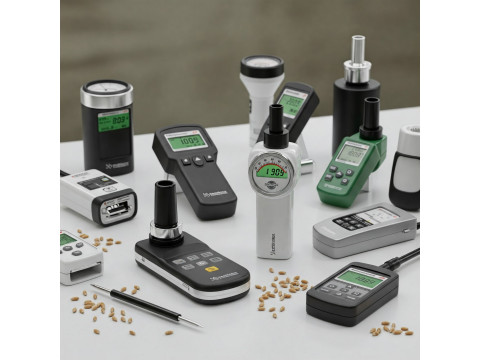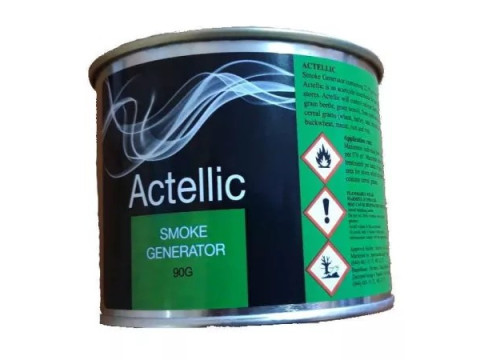Harvesting is only half the battle. To ensure that your labor is not wasted and that the grain retains its quality and market value, it is necessary to strictly control one of the most important indicators - moisture. It is precisely on the correct measurement of grain moisture that its preservation, resistance to mold and pests, as well as the final price at sale depend. In this article, we will understand why moisture control is so important, and how to choose the optimal device for this - a grain moisture meter .
Why is grain moisture control critically important?
Water is the basis of life, but its excess in harvested grain can lead to catastrophic consequences:
- Microbial growth: High humidity creates ideal conditions for mold, fungi, and bacteria to grow. This not only spoils the appearance of the grain, but can also lead to the accumulation of dangerous mycotoxins.
- Self-heating: Microbial activity and grain respiration at high humidity cause a rise in temperature in the mass. This leads to dry matter loss, grain darkening, and reduced grain quality.
- Loss of germination: For seed material, exceeding the permissible moisture content means a rapid loss of germination ability.
- Price reduction: The quality of grain directly affects its purchase price. Buyers always check the moisture content, and deviation from the standard (for example, DSTU grain moisture content ) leads to financial losses.
- Storage and processing problems: Grain that is too wet is more difficult to store, is prone to caking, and can cause problems with processing equipment.
Therefore, accurate control of grain moisture at all stages – from the field to the elevator or warehouse – is a prerequisite for successful agribusiness.
What is a grain moisture meter and how does it work?
A grain moisture meter (or grain moisture meter) is a special device designed to quickly and accurately determine the percentage of moisture in various agricultural crops. Modern portable moisture meters , such as digital models, allow you to conduct analysis directly in the field, in the back of a truck or in a warehouse, without the need to go to a laboratory.
Most popular portable models operate using the dielectric (capacitive) or conductometric (resistive) method, measuring the electrical properties of a grain sample as a function of its moisture content. The result is usually displayed on a digital display as a percentage.
How to choose the right grain moisture meter?
With so many models on the market, it can be overwhelming to choose. To choose the grain moisture meter that best suits your needs, consider these key factors:
- Accuracy: Perhaps the most important parameter. Look for devices with minimal error (ideally ±0.5%).
- Measurement range: Make sure the device covers the humidity range relevant to your needs (harvesting, storage, drying).
- Calibration: It is important that the moisture meter has factory calibrations specifically for the crops you are working with (wheat, corn, barley, sunflower, rapeseed, soybeans, etc.). The ability to adjust the calibrations by the user is a big plus.
- Ease of use: The device should be intuitive and the measurement process should be fast.
- Portability and reliability: For work "in the field", compact dimensions, a durable housing and a reliable power source are important.
- Price: Value for money is an important factor. The most expensive device is not always the best choice for specific tasks.
VSP-100 Moisture Meter: Reliable Humidity Control at an Affordable Price
Among the many offers on the Ukrainian market, the VSP-100 grain moisture meter stands out. This modern digital device has gained the trust of many farmers thanks to its combination of high accuracy, reliability, and affordable price.
Why should you pay attention to the VSP-100?
- Proven accuracy: The VSP-100 provides accurate measurement results, allowing you to make informed decisions about storing and selling your crop.
- Analysis speed: Measurement takes a few seconds.
- Portability: Lightweight and compact, it is ideal for use in any environment.
- Factory Calibrations: Has built-in calibrations for major grains, legumes and oilseeds.
- A worthy analogue of the Wile 55: Many experts consider the VSP-100 to be an excellent and reliable alternative to the popular, but much more expensive Finnish moisture meter Wile 55. You get comparable functionality and accuracy for much less money.
If you are looking for a reliable grain moisture meter that won’t break the bank but will provide the quality control you need, the VSP-100 is a great choice. It will help you avoid storage losses, correctly assess crop quality, and protect your investment.
You can find out detailed technical specifications of the VSP-100 , a list of supported crops, and the current price, as well as buy the VSP-100 grain moisture meter with a warranty and delivery across Ukraine on the product page in the Gontagro online store:
Conclusion
Investing in a quality grain moisture meter is not an expense, but a guarantee of preserving your harvest and profit. Accurate measurement of grain moisture allows you to avoid product spoilage, comply with quality standards and profitably sell what you have grown. Devices such as the VSP-100 make professional moisture control available to every farm in Ukraine.
Don't rely on intuition - trust accurate measurements! Choose reliable equipment and be confident in the quality of your grain.
























